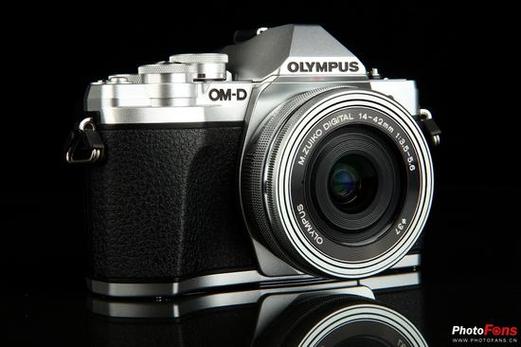Olympus OM-D E-M10 Mark II vs Mark III: A Detailed Comparison
When it comes to mirrorless cameras, the Olympus OM-D E-M10 series has been a popular choice among enthusiasts and professionals alike. The Mark II and Mark III models, in particular, have garnered a lot of attention for their compact size, advanced features, and impressive image quality. In this article, we’ll delve into a detailed comparison of the Olympus OM-D E-M10 Mark II and Mark III, covering various aspects such as design, performance, and features.
Design and Build Quality
The Olympus OM-D E-M10 Mark II and Mark III share a similar design philosophy, with a focus on compactness and portability. Both cameras feature a magnesium alloy body, which provides durability and resistance to corrosion. The Mark III, however, is slightly larger and heavier than its predecessor, which might be a trade-off for improved handling and build quality.

| Feature | Olympus OM-D E-M10 Mark II | Olympus OM-D E-M10 Mark III |
|---|---|---|
| Body Material | Magnesium alloy | Magnesium alloy |
| Dimensions (W x H x D) | 119.2 x 82.3 x 45.9 mm | 119.2 x 82.3 x 50.9 mm |
| Weight | 415 g (body only) | 449 g (body only) |
Both cameras have a weather-sealed design, which makes them suitable for outdoor photography in various weather conditions. The Mark III also features a more robust grip and a deeper handgrip, which contributes to a more comfortable handling experience.
Image Sensor and Performance
The Olympus OM-D E-M10 Mark II and Mark III are equipped with a 16-megapixel Live MOS sensor. While the sensor resolution is the same, the Mark III benefits from a more advanced TruePic VIII image processor, which improves image quality and performance.
One of the key advantages of the Mark III is its faster autofocus system, thanks to the implementation of the Contrast AF technology. This allows for quicker and more accurate focusing, especially in low-light conditions. Additionally, the Mark III features a 121-point autofocus system, compared to the 81-point system in the Mark II.
Shooting Features
Both cameras offer a range of shooting features that cater to different photography needs. The Mark II and Mark III both support 4K video recording at 30p, which is a great feature for videographers looking for a compact camera with high-quality video capabilities.

The Mark III also introduces a new Live Composite mode, which allows for long exposure photography without the need for a tripod. This mode combines multiple short exposure frames to create a single image with minimal noise and motion blur.
Handling and Ergonomics
While both cameras have a similar design, the Mark III offers some improvements in handling and ergonomics. The larger grip and deeper handgrip make it easier to hold the camera for extended periods, reducing hand fatigue. Additionally, the Mark III features a dedicated mode dial, which provides quick access to different shooting modes.
The Mark II, on the other hand, has a smaller grip and lacks a dedicated mode dial, which might be a drawback for some users. However, both cameras offer a range of customizable buttons and dials, allowing users to tailor the camera to their specific needs.
Conclusion
In conclusion, the Olympus OM-D E-M10 Mark II and Mark III are both excellent mirrorless cameras with their own strengths and weaknesses. The Mark III offers improved performance, handling, and features, making it a worthy upgrade for users looking to enhance their photography experience. However, the Mark II remains a solid choice for those who prefer a more compact and budget-friendly option.
Ultimately, the decision between the two models will depend on your specific needs and preferences. If you’re looking for a camera with advanced features, improved handling, and faster performance, the Mark III is the way to go. On the other hand, if you’re satisfied with the performance of the Mark II and prefer a more compact camera, it might be the better choice for you.




